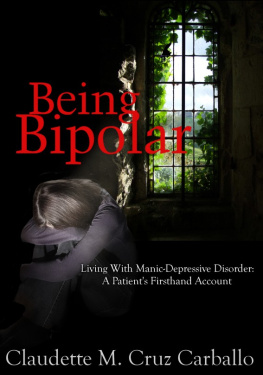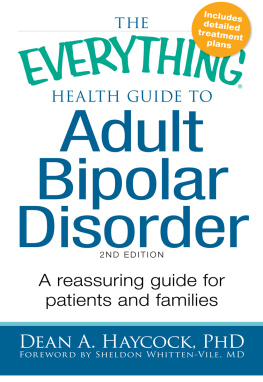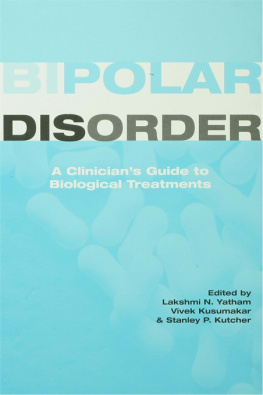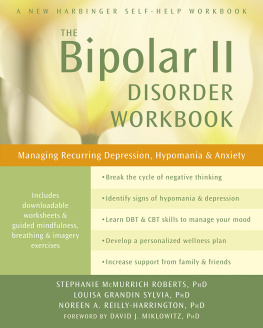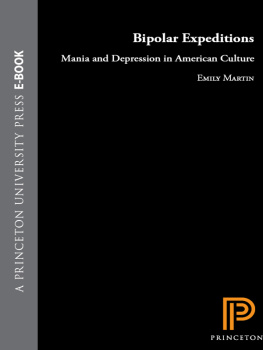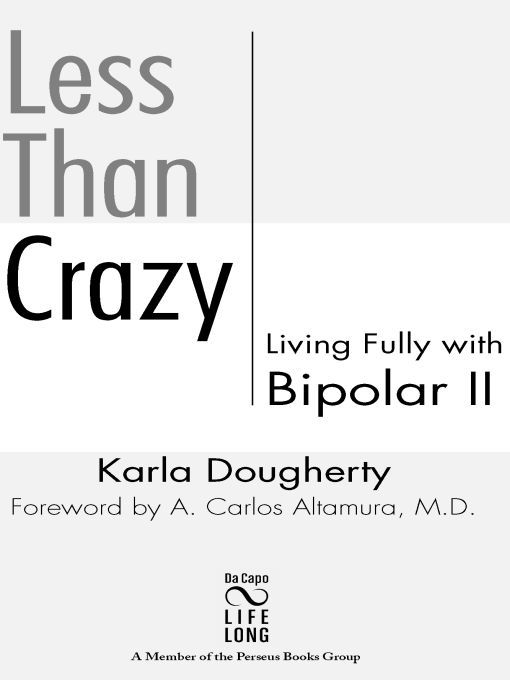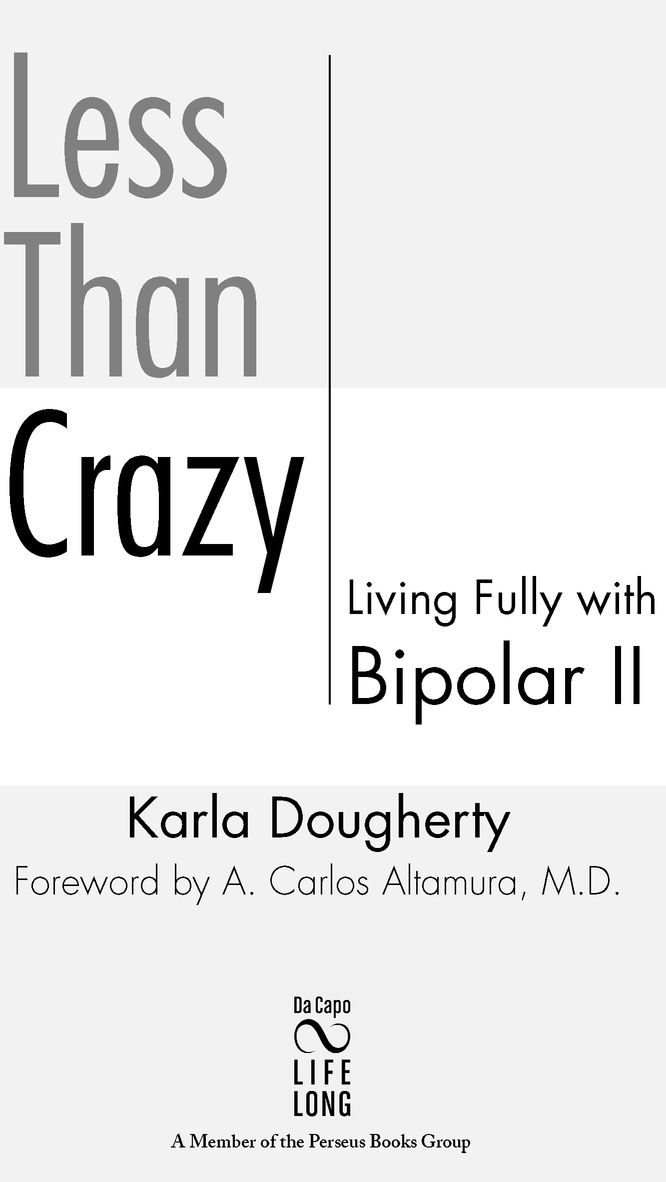Table of Contents
To the memory of
Debbie Geller.
It was much too soon
Acknowledgments
IF IT WERENT for the profound kindness, generosity, support, and, oh yes, the patience of the people I love, this book would never have been written. First and foremost, thank you to my husband. DJ, you have always been there for me: In you, I have lifes promise. Thank you to my family of friends, including Frances Pelzman Liscio, whose goodness never ceases to amaze me and whose talent graces the drawings in this book; Betsy Elias, who somehow found the time to go through the manuscript painstakingly and find what Id missed; Stefanie Nagorka, whose unwavering friendship kept me on the straight and narrow; and Marilyn and Lance Garcy, whose astonishing selflessness enabled me to keep going.
The talented professionals at Da Capo have me in awe, including my editor, Katie McHugh, and Renee Caputo and Connie Day. Thank you all.
James Welch, M.D., has been remarkable, not only as a psychiatrist but also as an editor. And I owe special thanks to Rose Oosting, Ph.D.: this book would not have been written without you.
Thank you to my agent and friend Joelle Delburgo, who has always believed in my abilities.
And a big thank you to my goddaughter, Michelle Shang, just because.
Foreword
FOR A LONG time, no distinction was made among different types of bipolar disorder. Either you were bipolar or you were not. Unfortunately, this all or nothing approach to the disorder created many misconceptions about the disease and resulted in its being broadly associated with schizophrenia and borderline personality disorder. Today, however, we know there is a bipolar spectrum, where bipolar I (characterized by frequent co-morbidity with more serious emotional disorders) appears at one end of the spectrum, and where milder, less debilitating bipolar diseases appear the further along the spectrum one goes.
Bipolar II is a much milder form of bipolar disease. Yes, there are contrasting swings of exuberance and depression, but they manifest themselves in quieter ways; mania usually exhibits as anxiety, and depression often exhibits as a milder and more atypical form of depression. It is this subtlety of symptomswhich can still strongly affect quality of lifethat makes bipolar II so difficult to diagnose.
One of the more relevant characteristics of bipolar II is anxiety, encompassing a range of forms from panic attacks to social anxiety and obsessive-compulsive symptoms. Because of these links to anxiety, bipolar II is often overlooked and misdiagnosed.
People have asked me what makes a person who is diagnosed with bipolar II different from someone who is anxious. Its human nature to be anxious before a big event, before a presentation, or in a new job or relationship. But whereas this natural anxiety dissipates after the event or presentation is over, or as the job becomes familiar or the relationship more solid, anxiety in bipolar II not only lingers but gets stronger with each day.
Many of my patients worry about imaginary crimes and are persistently anxious about something they did or said that has no bearing on the actual reality. They often read facial expressions wrong, seeing something negative in people where it doesnt exist. This anxiety builds up... until, usually within a week or so, the patient plummets into a depression. The anxiety is still there, combined now with feelings of hopelessness and helplessness.
It is at this stage where most people with bipolar II come for help, and where the misdiagnosis usually takes place. A physician sees a person who is depressedand prescribes an antidepressant that not only will not work but also can create mania.
As director of the Depressive Disorders Treatment Center in Milan, Italy, I have seen many bipolar II patients who initially came in for depression or anxiety. I have learned to read the signs of this conditionthe hypomania, the heightened anxiety, the debilitating depression that wont go away. But when such a patient is given the right medication (be it Lithium, an anticonvulsant, or an antipsychotic such as quetiapine), I have seen the lingering depression quickly subside, allowing the person in pain to regain his or her life.
As a professor of psychiatry at the University of Milan as well, I have also had the privilege of conducting studies on various medications for bipolar disorder, among them the quetiapine (brand name: Seroqeul) mentioned above. Ive long worked on research about antianxiety medications and their potential for abuse. People with bipolar disorder often have addictive personalities, and unfortunately, the antianxiety medications play right into this vulnerability to addiction. Even worse, the patient needs more and more of the medication as he or she builds up a tolerance. It also creates extreme fatigue and a cognitive fogginess. But we found that quetiapine, taken in much smaller doses than with schizophrenia or bipolar I, has a calming effect, just like an antianxiety medication, but without affecting cognitive abilities or causing fatigue. And most important, quetiapine is not habit-forming. The results of a four-year follow-up of patients on quetiapine therapy have just been published in the Journal of Affective Disorders (March 2008), and I am happy to report that low amounts of quetiapine were as effective in keeping major depression and mania at bay as were older, more traditional therapies, such as lithium bicarbonate, at higher doses.
Europeans have known about bipolar II for over a decade. In fact, it is twice as common as bipolar I within the population. Studies such as the Netherlands Institute of Mental Health Survey and Incidence Study (NEMESIS) and the EPIDEP in France found distinct differences between people with bipolar I and those with II. Those with bipolar II showed symptoms earlier in life; their depression was more chronic; they were more apt to take risks when in a hypomanic state; and, as I wrote in the Journal of Affective Disorders in 2007, they are more prone to substance abuse and anxietyfrom panic disorder to social phobias, generalized anxiety disorder, and obsessive-compulsive disorder. They are also more inclined to succumb to alcoholism or become addicted to drugs. Because the disease is usually not diagnosed for, on average, ten years, it makes sense that people afflicted with bipolar II usually have a poor quality of life.
With this book, Karla Dougherty attempts to solve the mystery of bipolar II. It is a thorough, informative, and moving account of what it ultimately means to have the disorder. I know it is her hope, as it is mine, that Less Than Crazy will find an audience among people who have lived half-lives, who have grappled with their symptoms for years, who have always blamed themselves for their transgressions, and who have felt intense shame, guilt, and misunderstanding for much too long a time. It will also be of great help and interest to family members and friends of individuals with bipolar II, as well as an invaluable source of information for readers who simply want to understand this condition better.
This book is yet another reason to hope that psychiatric disorders, such as bipolar disorder and depression, will continue to lose their stigma, and that more and more people will seek out help and, quite simply, get well.
A. Carlos Altamura, M.D.



